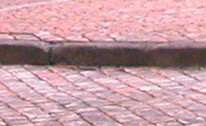 |
 |
 |
 |
 |
 |
 |
|
Fountains Abbey: History
Fountains Abbey: Buildings
|
Stones, slates and tiles (32/33) Fountains had quarries, or rights to quarry stone, in Skelldale, Nidderdale, Craven and Hutton Moor.(140) Laverton sandstone was available nearby, just at the edge of the abbey precinct.(141) The community acquired rights to take millstones in Crosslands, near its grange at Bradley, some four miles from Huddersfield, and also at Sawley.(142) John Norton, a knight of Sawley, granted Fountains all his quarries and millstones in Stainburne, with free access through his lands to obtain this, and the right to quarry stone as often as they wished in all his lands in Sawley, excluding, John’s manor and demesne lands. John stated that this stone was for any building that was required at the monastery and its granges of Morker, Haddockstones, Swanley and Brimham, and for roofing and repair work. In addition to stone, the community could fell any trees in the quarries. John imposed no restrictions on the monks as to when or often they could quarry, and stipulated that they should not be hindered by John or anyone acting in his name.(143) The manufacture of pottery and tiles The community also manufactured pottery at Bradley grange, near Huddersfield, at Potter Heaton.(145) Tiles were produced at Cayton, in Lower Nidderdale, some four miles from the abbey.(146) |

